This week saw the conclusion of arguably the most significant meeting for biodiversity since the Rio Earth Summit in 1992. Read our take on COP15 in Montreal, what it means for nature, and how the Royal Botanic Garden Edinburgh is playing its part.
Are you all COPped out yet? A whirlwind six weeks have already seen the underwhelming Climate COP27 and the under-reported CITES COP19, so you could be forgiven for expecting the final instalment of the trilogy, COP15, to underachieve. But this much-delayed second session of the fifteenth Conference of the Parties to the UN Convention on Biodiversity (CBD) in Montreal, Canada, with official hosts Kunming, China, ended on Monday with a significant Christmas gift for nature.
COP15 as it unfolded
Scientists voiced concern as proceedings got underway on December 7th, with Professor Sandra Díaz of Argentina’s National Scientific and Technical Research Council, member of the First Minister of Scotland’s Environmental Council and co-author of the influential IPBES Global Assessment Report on Biodiversity and Ecosystem Services, writing in Nature that the post-2020 Global Biodiversity Framework, first drafted in 2021, now risked being “alarmingly diluted”.
On December 10th, Professor EJ Milner-Gulland (Tasso Leventis Professor of Biodiversity at the University of Oxford), Dr David Obura (Director of CORDIO-East Africa and member of the Earth Commission) and Mike Barrett (Executive Director of Science and Conservation at WWF UK) launched an open letter to COP15 negotiators, imploring them to “commit to halting and starting to reverse biodiversity loss by 2030.” It was signed by over 3,200 scientists from 130 countries. “There is a moral obligation,” stated the authors. “It makes scientific sense, and is achievable if we act now, and act decisively. We owe this to ourselves and to future generations – we can’t wait any longer.”
In the second week of the conference, the BBC reported “progress has been slow with rows over finance and little sign of compromise,” and indeed some countries from the global south walked out altogether on December 14th over the question of finance for biodiversity conservation.
At the eleventh hour, however, hosts China unveiled a compromise package of six papers: the Global Biodiversity Framework itself; a framework for monitoring and reporting; mechanisms for planning, monitoring, reporting and review; capacity-building, development, technical and scientific cooperation; resource mobilisation (i.e., finance); and digital sequence information from genetic resources, which was proving another contentious issue. In an epic seven-hour plenary session lasting into the early hours of the meeting’s final day, the new ‘Kunming-Montreal Global Biodiversity Framework’ was successfully agreed by 190 nations[1] – although it took until that evening before the Democratic Republic of Congo representative was brought on-board, to resounding applause from delegates attending the last plenary session.
The Royal Botanic Garden Edinburgh at COP15
As an official observer to COP15 and member of the Consortium of Scientific Partners on Biodiversity (a network of technical and scientific agencies contributing to the development and implementation of the CBD), RBGE plays an ongoing role in providing scientific evidence on the state of biodiversity and monitoring actions to protect and restore it, nationally and internationally.
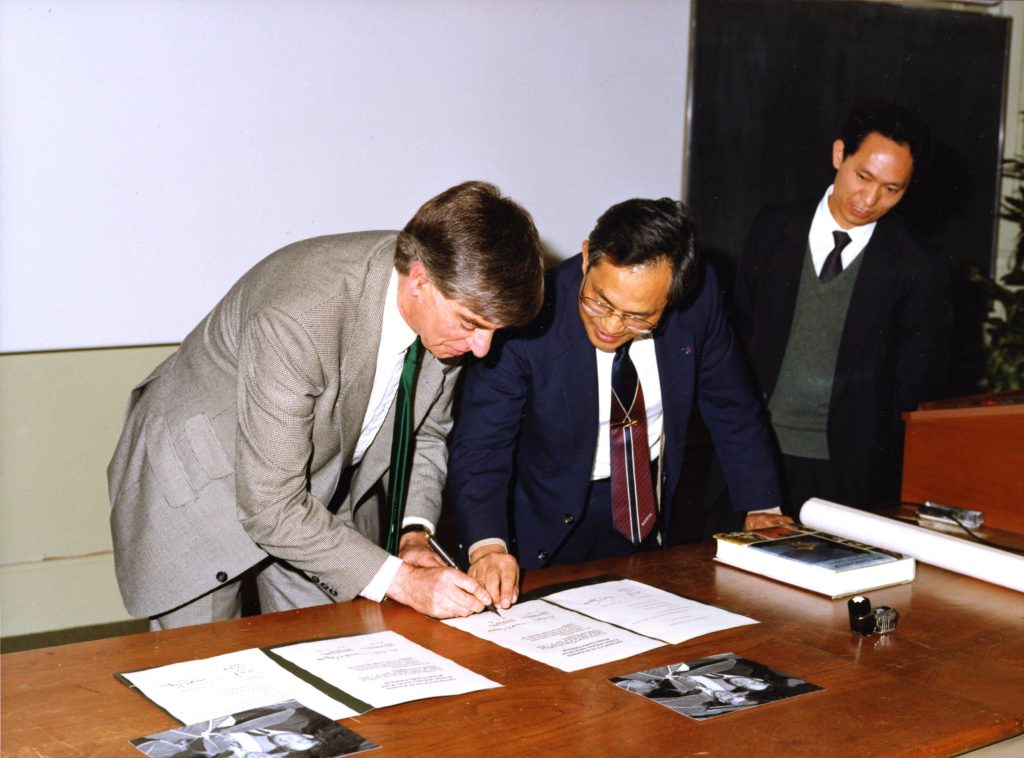
Twinned with the Kunming Institute of Botany, RBGE has extensive collaborations with researchers in Kunming and elsewhere in China, the COP’s official host nation. In the lead-up to COP15, the prestigious RBGE Medal was awarded to Professor Jin Chen, former Director of Xishuangbanna Tropical Botanical Garden (XTBG) and founding chair of the Chinese Union of Botanic Gardens. RBGE Regius Keeper, Simon Milne, was also honoured to be appointed to the International Advisory Committee of South China Botanical Garden (SCBG). Both XTBG and SCBG are institutes of the Chinese Academy of Sciences, China’s leading research and natural sciences body.
The strength of our relationships with China was evident throughout our participation in COP15 itself. Director of Science and Deputy Keeper Pete Hollingsworth took part in the proceedings online, including a roundtable discussion on ‘Biodiversity, the Edinburgh Declaration and COP15’ hosted by ICLEI – Local Governments for Sustainability, the Scottish Government and the Department of Ecology and Environment of Kunming, and a COP15 Side Event on Plant Conservation organised by Kunming Institute of Botany, where he explained how genomic science and digital sequence data can be used to monitor biodiversity change and conservation progress.
Our Centre for Middle Eastern Plants also provided support to a side event highlighting the value of Important Plant Areas – sites identified for their significant richness in plant and fungal species, threatened species or habitats, and/or species found nowhere else, as key targets for protection.
Back in Scotland, RBGE is part of an innovative, collaborative and globally impactful interdisciplinary community of universities, non-departmental public bodies and NGOs providing a strong evidence-base for biodiversity conservation policy and practice. This work was highlighted in an online series created with NatureScot, profiling over forty of Scotland’s scientists.
We also worked with NatureScot to host two public events: Solutions to the Nature-Climate Crisis in Scotland at the National Museum of Scotland, at which our lichen biodiversity scientist Rebecca Yahr gave a talk on the ground-breaking Darwin Tree of Life programme, and Making the Economy Work for Nature at the Edinburgh Climate Change Institute. In the John Hope Gateway at our Edinburgh Garden, the exhibition We are Nature; We are Responsible highlighted the interconnectedness of the nature and climate crises. Although the exhibition has now moved on, you can still view videos from it online.
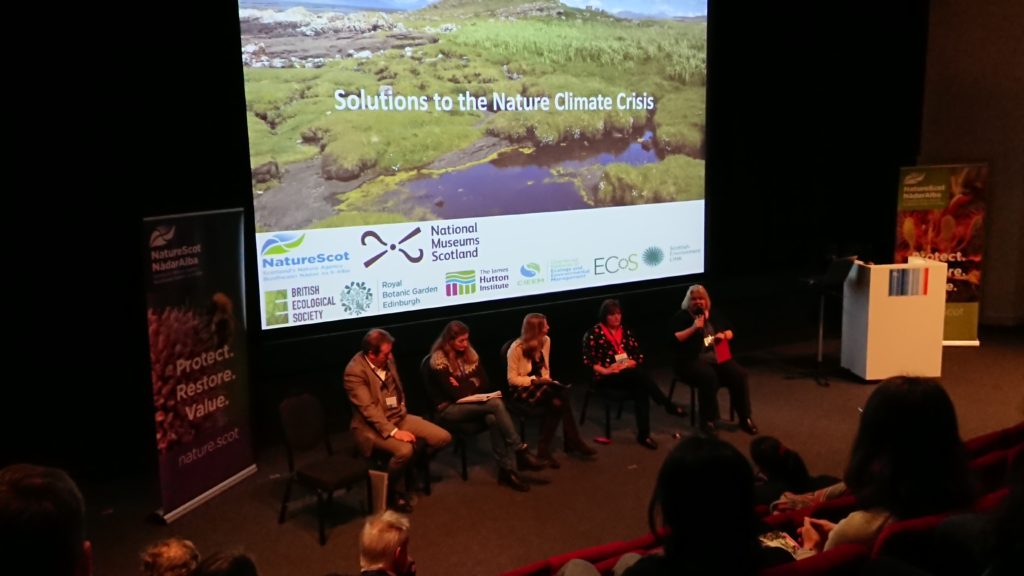
A new framework for biodiversity conservation
The Kunming-Montreal Global Biodiversity Framework centres around a 2050 Vision: ‘By 2050, biodiversity is valued, conserved, restored and wisely used, maintaining ecosystem services, sustaining a healthy planet and delivering benefits essential for all people,’ supported by a more immediate 2030 Mission: ‘To take urgent action to halt and reverse biodiversity loss to put nature on a path to recovery for the benefit of people and planet by conserving and sustainably using biodiversity, and ensuring the fair and equitable sharing of benefits from the use of genetic resources, while providing the necessary means of implementation.’ The document contains four goals and 23 targets, replacing the 2010 Aichi Targets, none of which had been achieved.
Goal A aims to conserve and restore biodiversity at genetic, species and ecosystem level. Goal B focuses on sustainable use and development, and the maintenance of ecosystem functions and services. Goal C promotes the equitable sharing of benefits from the utilization of genetic resources, digital sequence information and associated traditional knowledge. Goal D requires the provision, to all nations, of the means to achieve these aims, including financial resources, capacity-building, technical and scientific cooperation, and access to and transfer of technology.
Key targets, emphasised by the Secretariat of the UN CBD in a Twitter thread include: “bringing the loss of areas of high biodiversity importance, including ecosystems of high ecological integrity, close to zero by 2030, while respecting the rights of indigenous peoples and local communities” (Target 1); and furthermore, ensuring that “by 2030 at least 30 percent of areas of degraded terrestrial, inland water, and coastal and marine ecosystems are under effective restoration” (Target 2).
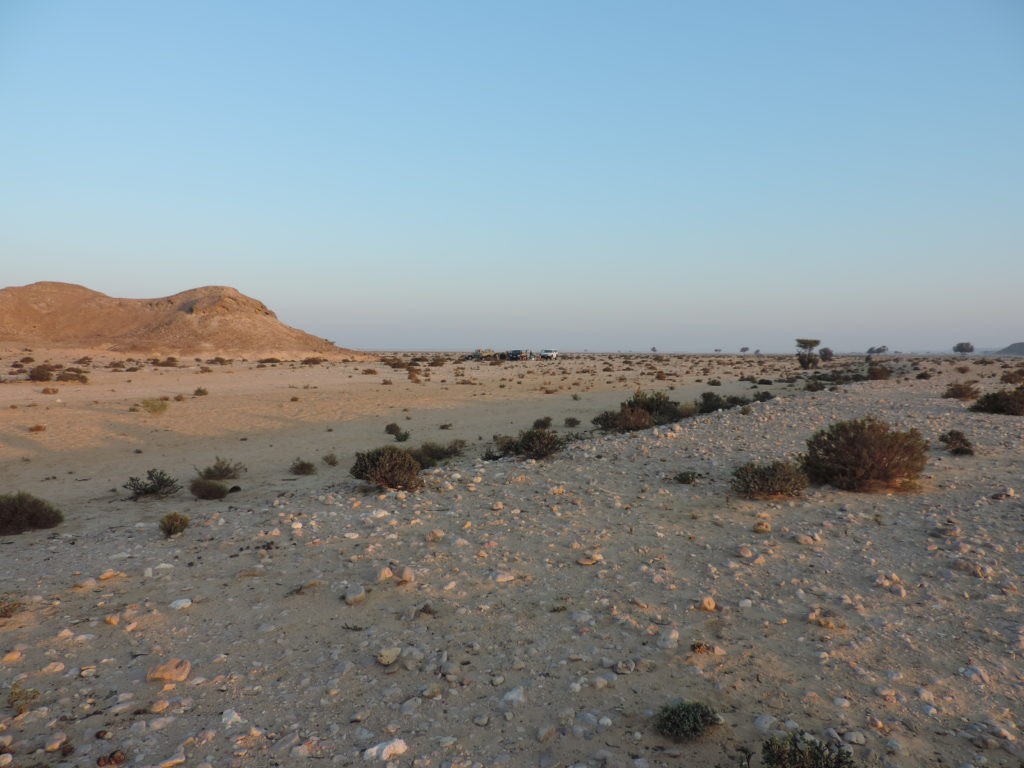
The much publicised ‘30×30’ commitment, to “ensure and enable that by 2030 at least 30 percent of terrestrial, inland water, and of coastal and marine areas, especially areas of particular importance for biodiversity and ecosystem functions and services, are effectively conserved and managed” is in Target 3. Halting the extinction of species is covered in Target 4; invasive non-native species are dealt with in Target 6; pollution, including pesticide use, in Target 7; and consumption, including food waste, in Target 16.
Target 15 is directed at corporations, requiring large companies and financial institutions to “monitor, assess, and transparently disclose their risks, dependencies and impacts on biodiversity … along their operations, supply and value chains and portfolios.” Target 18 strikes at harmful financial incentives and subsidies, requiring them to be “substantially and progressively” reduced by at least US$500 billion per year. Target 19 provides the financial mechanism to protect and restore biodiversity, aiming to mobilize at least US$200 billion per year to 2030, and increase the financial flow from developed to developing countries to at least US$20 billion per year by 2025, and at least US$30 billion per year by 2030.
The good, the bad and the unclear
Aside from the widespread relief that, overall, a successful and promising deal has been brokered, real progress was made on multiple issues integral to the delivery of the Global Biodiversity Framework.
Overall, the Mission for the decade to 2030 – “To take urgent action to halt and reverse biodiversity loss to put nature on a path to recovery” – is stronger than many had feared, suggesting a push to restore species and ecosystems rather than merely halting their destruction. Although not as snappy as the climate concept of ‘Net zero’, this more-or-less equates to the headline slogan, ‘Nature positive’, as now embodied in Scotland’s new Biodiversity Strategy.
The centrepiece of the agreement is the 30×30 commitment. According to the official CBD press release, achieving Target 3 will more than double the area under protection by 2030 – currently it records that only 17% of terrestrial and 10% of marine areas are protected in any form. Crucially, the agreement emphasizes areas of particular importance for biodiversity, ecosystem functioning and services, and prioritizes ecologically-representative, well-connected and equitably governed systems that recognise Indigenous and traditional territories and practices. However, it is not clear how the 30 percent will be distributed across land and sea, or among nations, and thus who will be accountable for meeting the target.
Target 4’s commitment to “halt human-induced extinction” of threatened species, “to significantly reduce extinction risk” and “to maintain and restore the genetic diversity within and between populations of native, wild and domesticated species to maintain their adaptive potential” was also very welcome. The inclusion of genetic diversity in Goal A is a key step forward for the accurate measurement and monitoring of biodiversity and threat, and recognises its importance in enabling species to respond and adapt to environmental change.
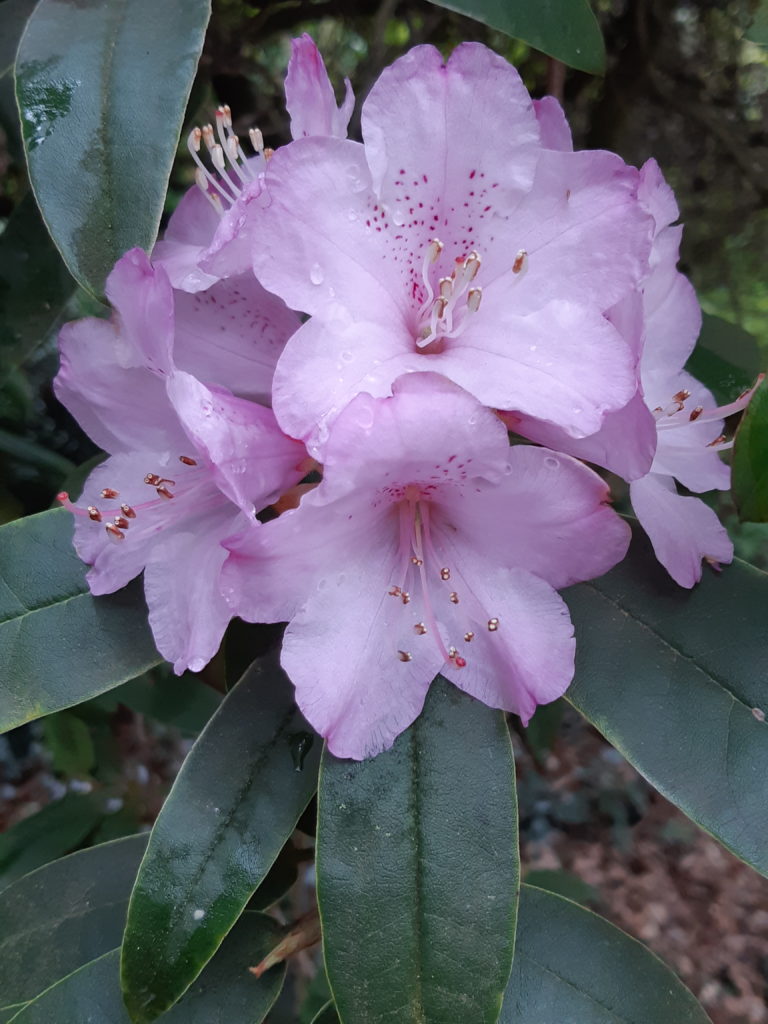
Digital sequence information (DSI) on genetic resources, was a potential stumbling-block for the meeting, and an area with significant implications for RBGE, as we play a leading role in international DNA-barcoding and genome-sequence projects to support rapid, accurate monitoring of biodiversity and greater understanding of adaptation to global change. DSI can be harnessed for human wellbeing and biodiversity conservation – in the derivation of new drugs, vaccines and crops and monitoring of threatened and invasive species – but also for profit. Therefore it is imperative that the countries of origin of the information should benefit from any financial gains made from its exploitation, which may often be difficult to trace. Remarkably, COP15 delegates agreed to develop a multilateral fund for the equitable sharing of benefits between the sources of DSI and their users, to be finalised at COP16 in two years’ time.
Many commentators greatly welcomed the movement towards incorporating the rights of Indigenous people throughout the Global Biodiversity Framework Goals and Targets. The agreement acknowledges “the important roles and contributions of indigenous peoples and local communities as custodians of biodiversity and partners in the conservation, restoration and sustainable use,” and demands that its implementation ensures the “rights, knowledge, … innovations, worldviews, values and practices of indigenous peoples and local communities are respected, documented, preserved with their free, prior and informed consent, including through their full and effective participation in decision-making.” These rights are emphasized again in Targets 1 and 3, in the hope that the 30×30 will be enacted with full regard to the rights of local communities.
The was also some good news on another big obstacle, finance. The existing Global Environment Facility[2] was requested to establish a Special Trust Fund to support the implementation of the Global Biodiversity Framework. This new fund would be in addition to existing support, to scale-up financing, and details are to be ratified as soon as possible in 2023. In combination with Target 19, this announcement acknowledges that dedicated finance must be made available and must flow from the global north to the global south, although the amounts promised are far from enough. Finance remains a contentious issue, and one of the main reasons for last-minute objections of the Democratic Republic of Congo and other developing countries.
Perhaps the main concern surrounding the Kunming-Montreal Global Biodiversity Framework is that, while it says many positive things, the ‘devil will be in the detail’ – of which there is precious little. With the exception of 30×30, the Targets contain few quantitative statements, rendering progress difficult to monitor and accountability hard to achieve. While some guidance is given in the second and third of the six papers in the agreed package, setting global Goals and Targets without binding national commitments leaves a gulf between ambition and implementation that may prove hard to bridge.
RBGE and the Global Biodiversity Framework
Strong national strategies, policies, delivery plans and monitoring procedures will be essential for delivering on the Global Biodiversity Framework commitments made this week.
For Scotland, the new Biodiversity Strategy, published in draft last week, goes a long way towards this, as an integral part of the Programme for Government. The priority actions of the Biodiversity Strategy are closely aligned to the Global Biodiversity Framework, aiming to accelerate restoration; improve, expand and connect protected areas; recover and protect vulnerable and important species; and generate investment to support nature recovery. A consultation will open in 2023 on the all-important Delivery Plan for the Strategy, which RBGE and many partner organisations will input into and subsequently act upon.
In addition, RBGE has co-led with NatureScot on a green paper providing a foundation for a Plant Biodiversity Strategy for Scotland, to which the Government is also committed, and which we aim to publish in Spring 2023.
RBGE has supported the Scottish Government-led Edinburgh Process for the United Nations, which has secured commitments from over 300 sub-national governments of countries, regions and cities around the world to the Edinburgh Declaration, raising ambition for sub-national implementation of the Global Biodiversity Framework.
Internationally, we help to deliver the Global Strategy for Plant Conservation (GSPC). The post-2020 GSPC will form a significant part of Global Biodiversity Framework delivery, although it will not be formally adopted until COP16 in 2024. Underpinning all deliverables of the GSPC is the World Flora Online (WFO), a freely accessible online Flora of all known plants. RBGE is a founding partner in the 50-strong WFO Consortium, and hosts and manages its ‘taxonomic backbone’, an up-to-date checklist of all vascular plant and bryophyte names and their classification, upon which the portal’s biodiversity data and the WFO Plant List depend.
RBGE’s team both supports and delivers work contributing to many of the Global Biodiversity Framework’s specific Goals and Targets. Goal A – to conserve and restore biodiversity at genetic, species and ecosystem level –will depend on accurate characterisation of these three levels of biodiversity at national and international levels. In Scotland, our conservation-genetics approach helps guide programmes for the protection, restoration and reintroduction of rare and threatened species, from montane willows to seagrasses. Our science team are characterising the components of priority threatened habitats such as oceanic heath and the vanishing snowbeds of the Cairngorms, and our collaboratively developed protocol for tracking within-species genetic diversity, implemented in Scotland, has broad applicability across the world.
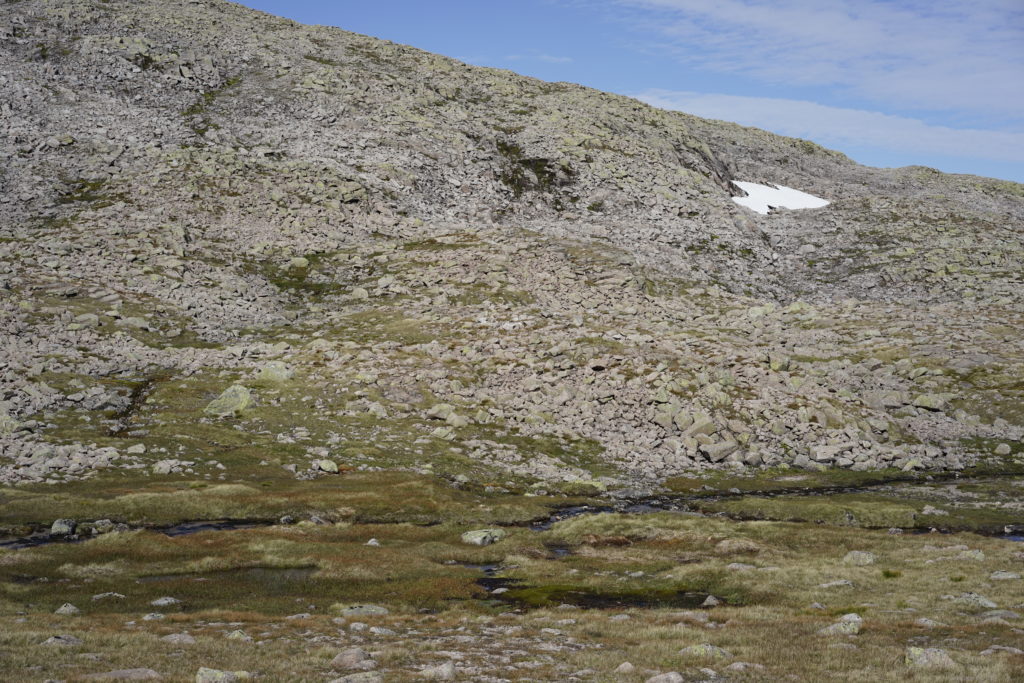
We are also a key player in major consortia harnessing the power of DNA sequencing to characterise biodiversity, including upscaling DNA barcoding and genomic sequencing, in the UK and across Europe through the Darwin Tree of Life and Biodiversity Genomics Europe programmes, and globally via the International Barcode of Life.
Restoration of degraded ecosystems (Target 2) rests on clear understanding of the most effective conservation actions. In Scotland, we provide this through work to document the process of recovery following removal of non-native plantation forestry trees on ancient woodland sites in Scotland. In Nepal we are testing the promotion of natural regeneration of canopy trees through the use of nursery crops in forests severely degraded by invasive non-native plant species.
Meeting the 30 percent targets for restoration and for protection of land and sea (Target 3) requires informed spatial planning to ensure such actions are fully climate resilient. Working within the Scottish Government’s Strategic Research Programme, we provide key evidence to show how restoration and conservation programmes can create climate refugia, such as for species, guilds, or whole communities of lichen epiphytes in Scotland’s Atlantic Rainforests.
Halting extinction (Target 4) will in many cases result from the effective meeting of Targets 1-3 to halt the destruction of ecosystems, extend protected areas, and restore degraded animal and plant communities. Our work to document the diversity and distributions of plant species, such as species-rich tropical herbaceous begonias and gingers will support monitoring of these efforts. In other cases, active species translocations or reintroductions may be necessary to save species. Our partnership in a new guide to conservation translocations, building on our Scottish Code for Conservation Translocations, will be an important aid here, while our successful translocations of Scotland’s rarest plants such as the alpine-blue sowthistle provide a model that can be replicated across suites of species.
Ex-situ conservation of threatened species both supplies material for these reintroduction programmes, and acts as a vital insurance for species at risk in the wild. In our Gardens we maintain populations of most of Scotland’s threatened species as well as many others from around the world. Our flagship International Conifer Conservation Programme maintains genetically diverse ex-situ collections of many of the world’s threatened conifers at ‘safe sites’ across the UK and Ireland.
Target 16 formalises mechanisms to help consumers make sustainable choices via policy, legislative and regulatory frameworks, education, information and provision of alternatives. Our work on global rubber production with the GCRF TradeHub is generating exactly this kind of information supporting sustainable rubber consumption choices, underpinning policies and frameworks, and helping private and financial sectors to reduce deforestation risks via supply chains and investments. A new video created with the Forest Stewardship Council shows how stewardship standards are delivering positive environmental, social and economic impacts, and how consumers can get involved.
UKRI’s initiative, ‘Integrating Biodiversity into Finance: Building a Nature-Positive Future,’ provides a new mechanism to achieve significant global progress towards Target 16, beginning in 2023. Of twelve flagship projects across the UK, RBGE is working on two: Reducing commodity-driven forest and biodiversity loss by exploring and filling data gaps for due diligence and Integrating finance and biodiversity for a nature positive future.
Conclusion
Many fine ambitions were agreed at COP15. With action on all 23 of the Global Biodiversity Framework Targets to be initiated immediately and completed by 2030, the remaining eight years of this decade – the UN Decade on Ecosystem Restoration – are crucial. However, like the ambitious Paris Agreement to limit global warming to 1.5C compared to pre-industrial levels, success will depend on every nation, leader, institution and individual committing to the actions necessary to meet those goals, and working in partnership and collaboration to achieve them.
Find out more and get involved
There is only space to mention a few of our programmes targeting the interlinked nature and climate emergencies here. Find out more from the links at https://www.rbge.org.uk/about-us/what-we-do/combating-the-nature-crisis/, or delve into our Science and Biodiversity Strategy.
Join our inaugural Climate House Art + Ecology Research Caféwith Creative Carbon Scotland on January 20th, aiming to bring together artists and researchers with a shared interest in the world of plants, biodiversity loss, and the climate emergency.
Visit our new exhibition Living Soil, supported by the players of the People’s Postcode Lottery, in the John Hope Gateway from February 10th, celebrating the biodiversity and importance of soils.
Support our work to conserve our green planet.
Read the official CBD COP15 press release here. The six documents agreed by COP15 on 19th December can be downloaded at the links below:
- Kunming-Montreal Global biodiversity Framework
- Monitoring Framework for the Kunming-Montreal global Biodiversity Framework
- Mechanisms For Planning, Monitoring, Reporting and Review
- Capacity-Building and Development and Technical and Scientific Cooperation
- Resource Mobilization
- Digital Sequence Information on Genetic Resources
[1]188 of the 196 parties to the CBD, plus two non-parties (the USA and the Vatican)
[2]A multilateral fund set up in advance of the 1992 Rio Earth Summit, which is the main financial mechanism for implementation of the CBD and other UN environmental conventions.
